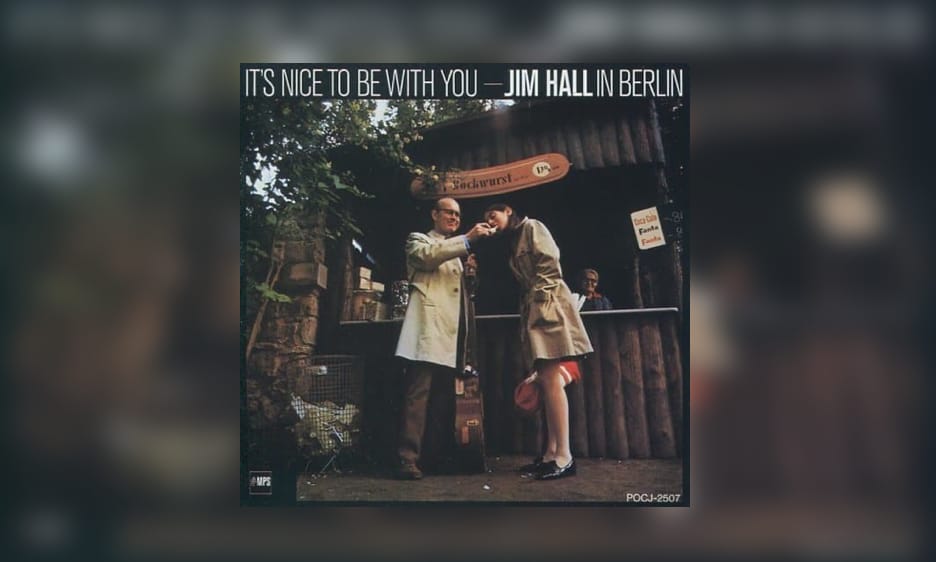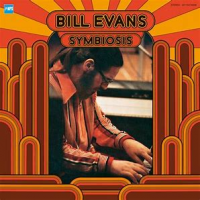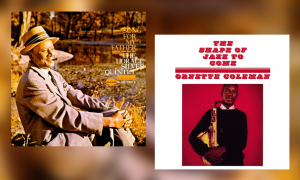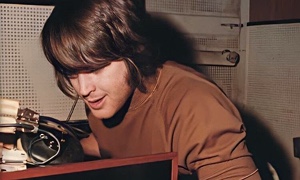Home » Jazz Articles » Building a Jazz Library » Joe Henderson, Bill Evans, Jim Hall: Buried Treasure fro...
Joe Henderson, Bill Evans, Jim Hall: Buried Treasure from Germany's MPS Label

Although there have been attempts to position MPS as a German version of Blue Note (which was founded, lest we forget, by two émigré Germans), the exercise does not really stand up. Yes, both labels were in their heyday prolific and emphasized high production standards; but Blue Note had an immediately identifiable sound, whereas that of MPS was more variegated, largely dependent as the label was on opportunities presented by touring Americans and subject to multiple recording locations and producers.
In 1983, founder Hans Georg Brunner-Schwer sold MPS to the Netherlands' Philips Group and the label's profile faded. There have been periodic attempts to resuscitate MPS, however, the most serious and sustained following its acquisition by the Hamburg-based media company Edel in 2014.
Among the highlights of the post-Edel releases is a series of newly recorded albums by the Italian bandleader and spiritual-jazz auteur Nicola Conte, beloved of this parish. Edel have also reissued much of MPS' back catalogue on vinyl and now, in 2022, some of that catalogue is also coming out for the first time on CD. The discs have been sensitively remastered by Christoph Stickel and Dirk Sommer, who have cleaned up the odd glitch and retained much of the original analogue character.
Here are some choice titles from the first batch....
 Dexter Gordon & Slide Hampton
Dexter Gordon & Slide HamptonA Day In Copenhagen
1969
The rise of the counterculture in the US in the 1960s was a Good Thing. One proof of that comes from the venom still directed towards it by right-wing American ideologues and their followers. But there was collateral damage: the adoption of rock music as the counterculture's soundtrack dealt a near death-blow to jazz as clubs, record buyers and a generation of weed smokers largely turned away from it. Tenor saxophonist Dexter Gordon was one of dozens of jazz musicians who relocated to Europe, where plentiful work opportunities and appreciative audiences continued to exist. Other US refugees, members of Gordon's kicking sextet on A Day In Copenhagen, include trombonist Slide Hampton, pianist Kenny Drew and drummer Art Taylor; the remaining band members are the Jamaican-born London-based trumpeter Dizzy Reece and the Danish bassist Niels-Henning Orsted Pedersen. Five of the six tracks are exuberant hard bop-mainstream workouts, including three originals by Hampton, who was also the album's arranger; the sixth is Johnny Mandel's ballad "The Shadow Of Your Smile," given a sumptuous reading. Despite the presence of two other horns, Gordon, in romping form, is the main soloist. A terrific album.
 Joe Henderson
Joe HendersonMirror Mirror
1980
More buried treasure. Mirror Mirror is one of the overlooked gems in tenor saxophonist Joe Henderson's discography. Overlooked because in 1980 MPS lacked sufficient market penetration in the US to make a major impact. The album was recorded in Los Angeles and produced by Henderson, with MPS' Joachim E. Berendt credited as executive producer, and features a killer all-acoustic quartet completed by pianist Chick Corea, bassist Ron Carter and drummer Billy Higgins. There are three shimmeringly pretty ballads (Corea's title track, Carter's "Candlelight" and Bob Haggart's "What's New"); two medium to fast-paced blues (Carter's "Keystone" and Corea's "Blues For Liebestraum"); and Henderson's out-there "Joe's Bolero," at close on ten minutes the longest track, characterized by Henderson's broken notes and vocalizations, Corea's borderline atonality and Higgins' fierce attack.
 Jim Hall
Jim HallIn Berlin: It's Nice To Be With You
1969
Given the masterpieces he has been heard on—his own Concierto (CTI, 1975) and the duo set Undercurrent (United Artists, 1962) with pianist Bill Evans among a half dozen others—guitarist Jim Hall's discography is in a parlous state. So it is good to have In Berlin: It's Nice To Be With You, made with bassist Jimmy Woode and drummer Daniel Humair, back in circulation. It falls a little short of a being a masterpiece but it is very, very good. With Evans' mid-1960s Verve albums Conversations With Myself in mind, perhaps, along with the introversion Hall and Evans shared, producer Berendt suggested to Hall that he record some dialogues with himself, overdubbing a second guitar track. Two-guitar versions of Richard Rodgers' "My Funny Valentine," Hall's "Young One" and Duke Ellington's "In A Sentimental Mood" followed. Berendt gets a posthumous merit award: all three tracks are lovely. So, too, are the straightforward trio tracks: Jim Webb's "Up, Up And Away," Hall's "Blue Joe" and "Romaine" (given an up-tempo bossa nova treatment), Johnny Green's "Body And Soul" and Jane (Mrs Hall) Herbert's "It's Nice To Be With You."
 Bill Evans
Bill EvansSymbiosis
1974
Happily for his fans, Bill Evans' career, though foreshortened by illness and self-indulgence, includes a well packed discography. With two successive decade-long monkeys on his back (first heroin, then cocaine), each of them the size of King Kong, in the 1970s Evans and his manager Helen Keane assiduously sought out cash-upfront recording opportunities. Not all of them are triumphs but there are few outright duds. Symbiosis is so-so. Recorded in New York, it is a collaboration with the composer-arranger Claus Ogerman and features Evans, on acoustic piano and Fender Rhodes, with bassist Eddie Gomez and drummer Marty Morell and a woodwind and brass orchestra drawn in the main from members of the New York Philharmonic. The material is an underwhelming contemporary-classical two-movement piano concerto composed by Ogerman over which Evans solos (rather in the manner tenor saxophonist Stan Getz rode arranger Eddie Sauter's string arrangements on the stone triumph that was Getz's 1962 Verve album Focus). Like the curate's egg, parts of Symbiosis are excellent and Evans aficionados will want it in their collection.
 Mark Murphy
Mark MurphyMidnight Mood
1968
Like Dexter Gordon and his refugee compatriots (see above) the singer Mark Murphy was also in the 1960s resident in Europe, often recording with pick-up bands composed of visiting Americans, fellow refugees and local musicians. The marvellous all-singing all-swinging Midnight Mood, recorded in Cologne, is one such outing, though the band is more than a pick-up, drawn as it is from members of the Kenny Clarke Francy Boland Big Band: trumpeter Jimmy Deuchar, trombonist Ake Persson, alto saxophonist Derek Humble, tenor saxophonist Ronnie Scott (at whose London club Murphy regularly appeared), baritone saxophonist and flautist Sahib Shihab, pianist Francy Boland, bassist Jimmy Woode and drummer Kenny Clarke. The ten songs are equally split between in-band originals and standards (the album kicks off with an acapella version of Duke Ellington's "Jump For Joy" and ends with Hoagy Carmichael's "I Get Along Without You Very Well"). Murphy is on peak form. Jazz vocals are an acquired taste and Midnight Mood is a good place to acquire it.
Tags
PREVIOUS / NEXT
Support All About Jazz
 All About Jazz has been a pillar of jazz since 1995, championing it as an art form and, more importantly, supporting the musicians who make it. Our enduring commitment has made "AAJ" one of the most culturally important websites of its kind, read by hundreds of thousands of fans, musicians and industry figures every month.
All About Jazz has been a pillar of jazz since 1995, championing it as an art form and, more importantly, supporting the musicians who make it. Our enduring commitment has made "AAJ" one of the most culturally important websites of its kind, read by hundreds of thousands of fans, musicians and industry figures every month.























